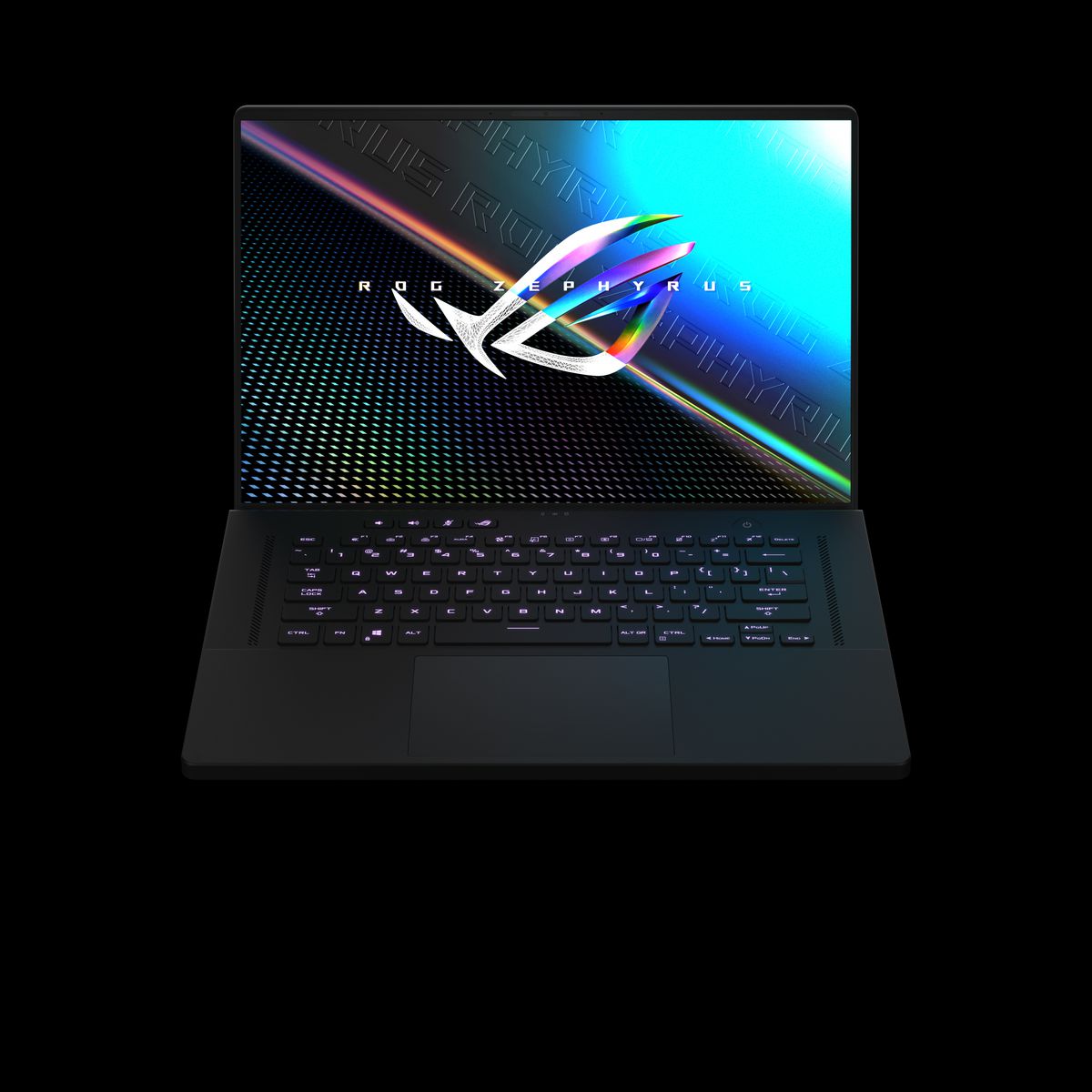If you’re wondering why every company under the sun has released new gaming laptops today, it’s because Intel has announced its newest flagship mobile processors. They’re the newest members of its 11th Gen “Tiger Lake H” series. Asus and Intel have announced the new Zephyrus M16, which will pair the chips with Nvidia’s GeForce RTX 3000 GPUs (up to a 3070).
What’s exciting about the M16 is that it has a QHD, 165Hz display with a 16:10 aspect ratio. 16:10 is highly unusual to see in gaming laptops; it’s more commonly found in business and productivity machines due to the extra vertical space it provides. Asus hopes the new look will help the Zephyrus line reach content creators and other customers seeking a device that can work as well as game.
“It takes gaming laptops to an audience that wouldn’t have gone to a gaming laptop,” says Sascha Krohn, Asus ROG’s director of PC and laptop technical marketing.
The slim-bezeled M16 has been around two years in the making. “It’s really tricky to do a laptop with super slim bezels, because you have to design the laptop around that screen,” Krohn said. The M16 has a 94 percent screen-to-body ratio, meaning it has smaller bezels in relation to its size than the Dell XPS 15 and almost any other consumer laptop on the market. The Razer Blade 15, for comparison, has just above an 80 percent screen-to-body ratio.
Asus’ G-series (including the renowned Zephyrus G14 and Zephyrus G15) will remain the more “mainstream” Zephyrus options going forward. The M16 is more expensive, and the Intel chip enables features that enthusiasts and content creators may value more, including Thunderbolt and Intel’s Quick Sync as well as the 16:10 display.

Image: Asus
Intel worked closely with Asus to equip the M16 with a number of modern features, including Dolby Atmos audio with Intel’s Smart Sound Technology Driver and MS Hybrid Mode. Mainly, the company believes its CPUs will provide enough power to take advantage of the 165Hz QHD display, a feat that only really became possible this year.
“We’re really ensuring that we continue to deliver the gaming performance that we had in 10th-Gen, where we outgamed the competition earlier this year, and focused on making sure that your IPC gains and our single-threaded performance is at the level that we expect it,” says Kim Algstam, Intel’s interim GM of premium and gaming notebooks.
Algstam also claims the new Tiger Lake chips will be better at multithreaded workloads and will outpace the competition (read: AMD) on battery life, which is an important consideration for the M16’s target audience. “We’ve spent incredible time making sure that the performance tuning and battery life tuning is up to expectations,” Algstam says. “Customers want to do more than just game. They want to work, they want to do more personal tasks when they’re out and about, and that happens on battery.”
AMD has set a high bar in that regard. The Ryzen-powered Zephyrus G15 and Zephyrus G14 were two of the longest-lasting gaming laptops I’ve ever reviewed. Many comparable 10th Gen Intel systems have lasted significantly less time in our testing.
The elephant in the room is Alder Lake, Intel’s next generation of hybrid chips, which are slated for release in the second half of this year. The company called the new line “a significant breakthrough in x86 architecture” at a preview in January. Should enthusiasts wait for that? Algstam didn’t address Alder Lake directly but did give a clear verdict. “I would definitely not wait,” he says. “I would buy today.”
Asus has not yet announced pricing or a release date for the Zephyrus M16.
